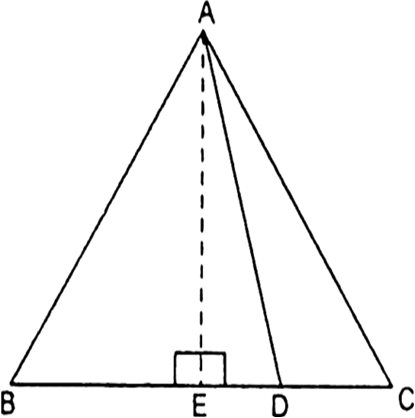 Long Answer Type
Long Answer TypeIn the given Fig, M is the mid-point of side CD of a parallelogram ABCD. The line BM is drawn intersecting AC at L and AD produced at E. Prove that EL = 2 BL. 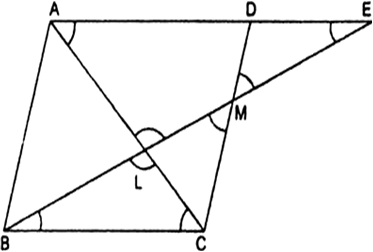
 Short Answer Type
Short Answer TypeIn the given Fig., ∆ABC is right angled at C and DE ⊥ AB. Prove that ∆ABC ~ ∆ADE, and hence find the lengths of AE and DE.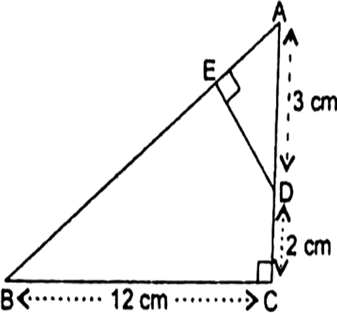
 Long Answer Type
Long Answer Type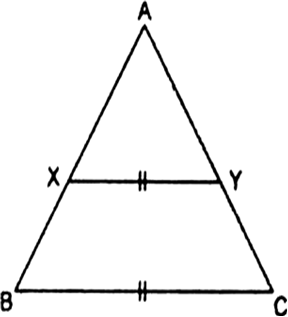
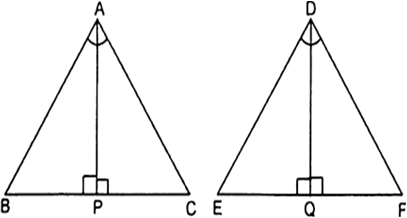
In the given Fig, ![]() if the area of XYZ is 32 cm2, then find the area of the quadrilateral PYZQ.
if the area of XYZ is 32 cm2, then find the area of the quadrilateral PYZQ.
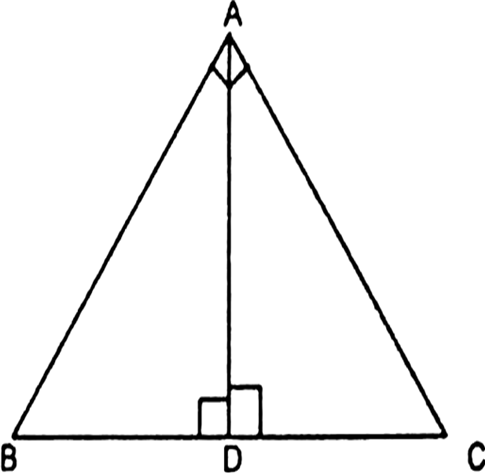
Given a right angle triangle, right angled at A. AD is the perpendicular drawn to the hypotenuse BC from vertex A.
To Prove:
(i) ∆BDA ~ ∆BAC
(ii) ∆ADC ~ ∆BAC
(iii) ∆BDA ~ AADC
Proof: In ∆BDA and ∆BAC:
∠ADB = ∠A = 90°
and ∠B = ∠B [common]
Therefore, by using AA similar condition
∆BDA ~ ∆BAC ...(i)
Now, in ∆ADC and ∆BAC, we have
∠ADC = ∠A = 90°
and ∠C = ∠C [common]
Therefore, by using AA similar condition
∆ADC ~ ∆BAC ...(ii)
Comparing (i) and (ii), we get
∆BDA ~ ∆ADC.
